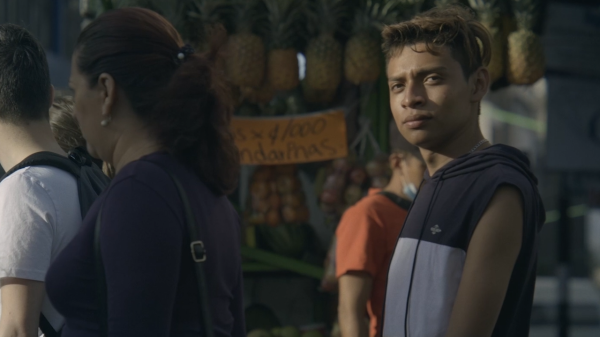
Save this storySave this storySave this storySave this story
Unlike American addresses, Costa Rican directions require you to get acquainted with the landscape you are traversing and the people who call it home.
When she was child, the filmmaker María Luisa Santos asked her mother for the address of their home in Escazú, a suburb of San José, Costa Rica, and got a winding poem as a reply. “Well, it depends on where you give it from,” her mother began. Instead of labelling their residence with a number and street name, her mother situated it in relation to local landmarks, including a church and a small supermarket.
Santos worked with Carlo Nasisse, her partner in filmmaking and in life, to make the short film “Direcciones.” In Spanish, the word dirección can indicate a place’s address or instructions for how to get there. But the film captures its broadest meaning, which is “guidance”: advice on everything from what route to take to how to live. Unlike American addresses, which make it easy to arrive at your destination without much thinking, Costa Rican directions require you to get acquainted with the landscape you are traversing and the people who call it home.
The New Yorker Documentary
View the latest or submit your own film.

If you are trying to find your way through San Pedro in San José province, for example, locals might describe places in relation to the antiguo higuerón, a fig tree some say marked an intersection for a century, before falling in 1991. The tree was so beloved by its neighbors that an old man eventually planted another one in its place. For an outsider, those directions might be almost inscrutable—where is the new tree, and why speak of its predecessor? But, for someone who grew up in the area, the use of such landmarks would be completely natural. In the words of Santos’s grandmother, Ligia Kopper: “I find it so quickly. It’s normal, it’s a part of life.”
Apart from the very center of San José, the first landing point for tourists, streets and buildings in the country are mostly unnamed, unnumbered, and unmarked. A postman explains that, in place of such labels, Costa Ricans use reference points “that exist or that existed.” Everything stands in relation to something else. “Like a mangrove,” the narrator of “Direcciones” says, this is “a system that survives through connections.”
Those lines, and the film itself, were born during the pandemic, when Santos and Nasisse exchanged nostalgic letters about their home towns. For Nasisse, who grew up in Georgia, the sense of collectivity embodied in Costa Rican directions stood in stark contrast to the prevailing individualism in the United States, especially during a shared tragedy like a pandemic. Though he stopped short of calling this an alternate cosmology, Nasisse sees the descriptive, referential addresses as a way of stating, “I can only think of myself in reference to my community, to my home, to the tree over there.”
If Costa Rican addresses are based on an alternative understanding of space, they are also infused with a nonlinear conception of time. Directions sometimes call on things no longer present but whose memory remains. For Santos and Nasisse, the most poetic of those tributes is to the obelisk that once rose over Paseo Colón, one of the main thoroughfares in San José. Built in the early twentieth century, the obelisk was the crowning jewel of the promenade. After it was demolished in the nineteen-fifties to make way for cars, residents took to giving directions “from the obelisk’s scar.”
What drives Costa Ricans to write the past into their maps? “Pain,” Kopper says, “because they took away something that belonged to us all.” She’s speaking of the obelisk, but the sentiment can apply to any bygone reference that attempts the task of homage and of translation. “Because it remains in my memory, it remains in my heart, and I would like to convey to others how beautiful it was.” But a faithful rendering is “impossible,” she concludes, “and that hurts so much.”
Across languages, people have sought to put a name to that feeling. Words like morriña, hiraeth, and saudade evoke a sense of longing for a distant era or homeland. Santos and Nasisse show that similar emotions can emerge without crossing a border, when one’s surroundings change beyond recognition.
In Costa Rica, where globalization, economic liberalization, and technological change have led to drastic transformations in recent decades, directions are being progressively substituted by coördinates. “Everything indicates that my grandmother’s addresses will be lost with my generation,” the film’s narrator says. “In the end, that awakens a loneliness in me.”
But the stories embedded in Costa Rican directions have found a way to persevere, even as satellite navigation takes over. Before we got off the phone, Santos and Nasisse told me about a group of amateur cartographers who have sought to improve geographical data on Waze. They set out across San José, sometimes working through the night, to trace roads and add points of interest to the application. Among them, of course, is the antiguo higuerón.
Sourse: newyorker.com